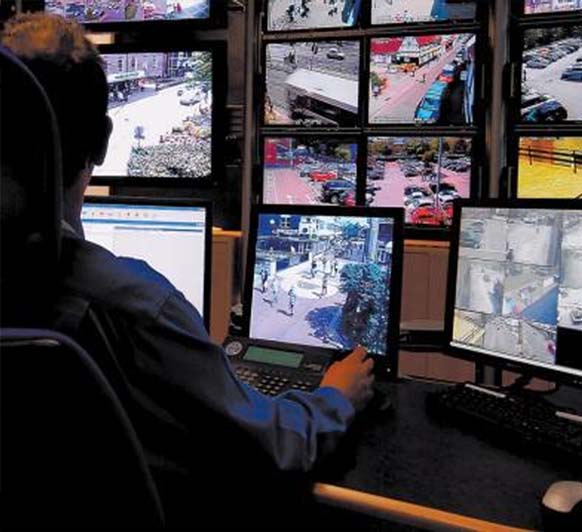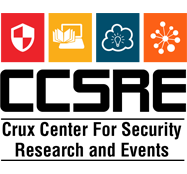
Login Into Your Account

Reset Password
Law enforcement Technology,Law enforcement Agency,Policing Technology,Smart Policing India,Homeland Security India,Border Security India,Border Management India,Cyber Crime news,Cyber Security news,Safety App,Public Safety App,Security App,Women Safety App,Police Initiative,Surveillance news,National Security news,isc event 2016,isc event 2017,scada event 2016,scada event 2017,Critical infrastructure security event 2016,Critical infrastructure security event 2017,iot summit 2016,iot summit 2017,Internet of things seminar 2016,Internet of things seminar 2017,iot seminar delhi 2016,iot seminar delhi 2017,iot conference delhi 2016,iot conference delhi 2017,top security event,security event,security event 2016,security event 2017,security conference 2016,security conference 2017,cso summit 2016,cso summit 2017,Corporate security event,Corporate security conference,security research india,homeland security research india,security think tank india
Law enforcement Technology,Law enforcement Agency,Policing Technology,Smart Policing India,Homeland Security India,Border Security India,Border Management India,Cyber Crime news,Cyber Security news,Safety App,Public Safety App,Security App,Women Safety App,Police Initiative,Surveillance news,National Security news,isc event 2016,isc event 2017,scada event 2016,scada event 2017,Critical infrastructure security event 2016,Critical infrastructure security event 2017,iot summit 2016,iot summit 2017,Internet of things seminar 2016,Internet of things seminar 2017,iot seminar delhi 2016,iot seminar delhi 2017,iot conference delhi 2016,iot conference delhi 2017,top security event,security event,security event 2016,security event 2017,security conference 2016,security conference 2017,cso summit 2016,cso summit 2017,Corporate security event,Corporate security conference,security research india,homeland security research india,security think tank india
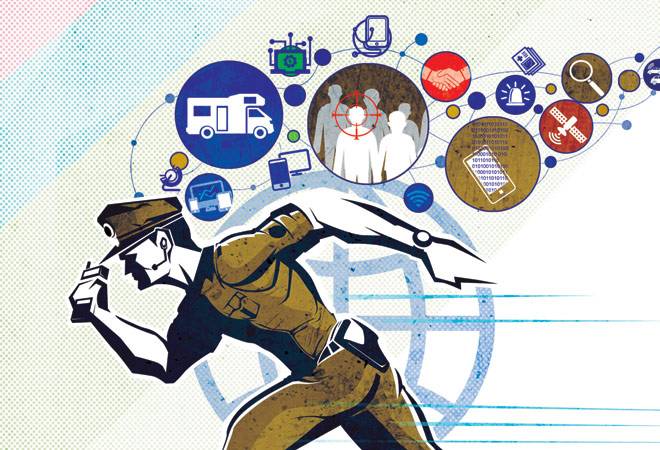
Data by the People, for the People — Eight Years of Progress Opening Government Data to Spur Innovation, Opportunity, & Economic Growth
Managing data as an asset and making it available, discoverable, and usable — in a word, “open” — has served to strengthen our democracy, promote government efficiencies, and improve citizens’ quality of life. With open data, we identify gaps and look for solutions to the most pressing challenges we face as a Nation. Open data has the power to make our economy grow and our local communities thrive.
Today, the Administration is releasing a fact sheet of key accomplishments over the past eight years in opening government data to spur innovation, opportunity, and economic growth. The release of this list comes in conjunction with today’s White House Open Data Innovation Summit, which will bring together government trailblazers, entrepreneurs, companies, advocates, and civic innovators to celebrate the accomplishments and to discuss the path forward on this progress.
Timeline of Key Open Government Actions
Since 2009, the President has taken action to ensure that government remains effective and innovative for the American public in an increasingly digital world. Notable examples include:
January 2009: Released Presidential Memorandum: “Transparency and Open Government”
March 2009: Hired the first U.S. Chief Information Officer
April 2009: Hired the first U.S. Chief Technology Officer
December 2009: Released Open Government Directive
August 2012: Launched the Presidential Innovation Fellows program
May 2013: Released Executive Order 13642: “Making Open and Machine Readable the New Default for Government Information”
May 2013: Released OMB Memorandum M-13-13: “Open Data Policy—Managing Information as an Asset”
January 2014: Re-launched Data.gov, improving searchability of federal datasets
March 2014: Established Open Data Cross Agency Priority Goal to evaluate federal efforts to open data
May 2014: Published the US Open Data Action Plan
February 2015: Hired the first U.S. Chief Data Scientist
August 2015: Signed an Executive Order to make permanent the Presidential Innovation Fellows program
Spring 2016: Hosted four United States Open Data Roundtables
September 2016: Created the first White House Open Data Summit
Opening Data to Spark Economic Growth, Innovation, and Opportunity
The U.S. Government is creating more data today than at any point in history. Under President Obama’s leadership, Federal agencies are making more of that data freely available to the public for use – unleashing nearly 200,000 datasets to date. At the state and local level, governments are finding ways to release data and create platforms to better inform citizens. The private sector is also working on public-private partnerships to release data. And today, open data has given us access to information that can make our lives better and our economy stronger.
Key examples of how open data has fueled economic growth, innovation and opportunity for Americans all over the United States include:
Police Data Initiative (PDI) increases transparency and accountability to improve policing outcomes. The Administration launched the White House Police Data Initiative to enable law enforcement agencies to better use data and technology to increase transparency and accountability, and ultimately improve policing outcomes and reduce unnecessary uses of force. More than 50 police departments from across the country have joined the Police Data Initiative, and have released over 150 open data sets on police-citizen interactions (e.g., use of force, traffic and pedestrian stops, and calls for service) in order to build trust with citizens. Additionally, through research partnerships, several of the departments are helping spur innovation in the use of data from body-worn cameras and advanced data analytics to improve police early intervention systems. Read more: FACT SHEET: Creating Opportunity for All Through Stronger, Safer Communities.
The Opportunity Project aims to improve economic mobility for all Americans. The Administration launched The Opportunity Project (TOP) in March 2016 to catalyze the creation of digital tools that use Federal and local open data to help communities navigate information about resources we all need to thrive, such as quality housing, schools, jobs, and transportation. Through Opportunity.Census.gov, TOP provides infrastructure for government - tech sector engagement through the creation of cohorts of tech companies and non-profits, Federal agencies and local communities that collaborate to create tools that address local challenges like connecting unemployed Americans with skills and jobs, helping low income families identify affordable homes near transportation and jobs, and exposing equity gaps between schools. Read more: FACT SHEET: The White House Launches “The Opportunity Project,” Utilizing Open Data to Build Stronger Ladders of Opportunity for All
City SDK and the U.S. Department of Commerce Data Service bridges the gap between federal, state, and local data. CitySDK (software development kit) by the U.S. Census Bureau is an open data platform that cities across the Nation are using to deliver innovation solutions for social good. It bridges the data gap between federal, state, and local data. This ecosystem-based approach is empowering citizens to deliver technical solutions that will benefit their local communities through the interaction of academia, industry, entrepreneurs, and government. For apps that require open data, case studies using the CitySDK have shown a reduction in developer time by 10x. For example, developers can use data available through the CitySDK to understand commuting habits, socioeconomic patterns on housing and employment, and where to target and anticipate community services and resources.
The College Scorecard helps Americans compare college costs and outcomes. In September 2015, the Administration launched the new College Scorecard tool to provide students and families with information on college performance that can help them identify colleges that are serving students of all backgrounds well and providing a quality and affordable education. The Scorecard is designed to increase transparency, aggregating data from institutions on federal financial aid and tax information and providing insights into the performance of institutions that receive federal financial aid dollars and the outcomes of the students of those institutions. Further, millions of parents use MyStudentData to view their child's school records per year. Parents can view demographics, schedules, grades, assignments, tests, attendance, discipline, and transcript data.
U.S. Patent and Trademark Office Open Data Portal and PatentsView improve access to patent and trademark data. The U.S. Patent and Trademark Office (USPTO) open data portal improves the discoverability, accessibility, and usability of public patent and trademark data to harness the power of data. The Developer Hub establishes a shareable and "social" platform for anyone in this community to showcase unique ways they're using our data, combining it with other data sets such as economic and geographic data. Through this forum, users can unlock the data to answer questions about trends in technology and innovation but also to provide input on other types of data sets the USPTO should release. This portal includes Application Programming Interfaces (APIs) for innovators to further mine this data, helping to inform our customers where to spend their limited research and development resources, and providing a much more detailed view of the competitive landscape than previously available. The PatentsView search tool allows audiences to interact with nearly 40 years of data on patenting activity in the U.S. This tool can be used to explore technological, regional, and individual-level trends through several search filters and multiple view options.
Opening Data to Improve the Efficiency and Effectiveness of the Federal Government
Over the last eight years, the Administration has launched a number of open data initiatives aimed at making the Federal Government more effective and efficient. Key examples include:
Data.gov is the home of all Federal Government data for the open data community. At the home of the U.S. Government’s open data, Data.gov, are tools and resources to conduct research, develop web and mobile applications, design data visualizations, and more for the open data community. Data.gov, owned and managed by the General Services Administration (GSA), has catalogued nearly 200,000 datasets, many produced by the Federal Government to enable transparency and innovation and to foster a return on our Nation’s investment in data. With the Federal open data policy, Data.gov has led the implementation of the Project Open Data Metadata standard with federal agencies, but has also worked with state and local governments to implement the same standard, enabling common metadata and data discoverability on a national scale. Data.gov is now working to help highlight and facilitate other cross-government data federation efforts with the U.S. Data Federation.
Making open and machine readable data the standard. On May 9, 2013, President Obama signed an Executive Order making open and machine-readable data the new default for government information, taking historic steps to make government-held data more accessible to the public and to entrepreneurs while appropriately safeguarding sensitive information and rigorously protecting privacy. Making information about government operations more readily available and useful is core to the promise of a more efficient and transparent government.
The White House has also launched Project Open Data, designed to share best practices and software code to assist federal agencies with opening data. These efforts have helped unlock troves of valuable data— that taxpayers have already paid for—and are making these resources more open and accessible to innovators and the public.
Federal IT Dashboards give insight into how the U.S. government spends its information technology investments. In June 2009, the Administration launched the IT Dashboard, a first-of-its-kind website to enable Federal agencies, industry, the general public, and other stakeholders to view details of more than $70 billion in Federal information technology (IT) investments. The IT Dashboard displays data received from agency IT Portfolio and Business Case reports, including general information on over 7,000 Federal IT investments and detailed data for over 700 of those investments that agencies classify as "major." Agency Chief Information Officers (CIOs) are responsible for evaluating and updating select data on a regular basis, which is accomplished through interfaces provided by the IT Dashboard.
eRegulations makes regulations easier to read and navigate. The Administration launched eRegulations to make regulations easier to read and navigate for the American public. Created by the Consumer Financial Protection Bureau and 18F, eRegulations clarifies regulations by bringing related information and regulatory history to the forefront, and allows the public to more easily and contextually voice their opinions on the proposed regulations before they become the law of the land. Further, it also saves agencies time in sorting and organizing comments on proposed regulations using a more granular data structure for them to analyze, organize and respond. All of it is open source and agencies and the public can review the history, documentation and dive into the code at: https://eregs.github.io.
ForeignAssistance.gov improves transparency in U.S. foreign assistance spending. The Administration launched ForeignAssistance.gov to serve as the U.S. Government's main tool for improving transparency in U.S. foreign assistance spending. Transparency and open data enable stakeholders and the general public to better understand U.S. foreign assistance investments around the world, make foreign aid more useful for development, and help hold ourselves more accountable. Since its launch, ForeignAssistance.gov has been working to establish standard data requirements across the U.S. Government, support agencies in quarterly data reporting, and develop a dynamic and user-friendly website. Its mission is to serve as a central repository where stakeholders can easily access and use U.S. Government foreign assistance budget, financial, and award information in a standardized and easy-to-understand format.
Increasing federal spending transparency. On May 9, 2014, President Obama signed the Digital Accountability and Transparency Act (DATA Act), setting forth a new commitment to expand Federal spending transparency. When fully implemented, taxpayers will be able to access, search, and download Federal spending data on a publicly available website. This data includes obligations, outlays, unobligated balances, and other budgetary resources for each appropriations account. Taxpayers will also have access to more information about Federal awards as they will be linked with financial data for the first time. With increased access to this data, the public will see where, how, and on what their Government spends their tax dollars.
Open Data to Improve the Health and Wellness of the American Public
The policies of this Administration in the healthcare industry--ranging from digitizing health records to expanding coverage, to putting data to work for science--have spurred an arc of transformation in healthcare, creating new opportunities and attracting new innovators and entrepreneurs. Making health data more open and accessible increases choice, empowerment and accountability on all sides of the healthcare spectrum.
A decade ago, only ten percent of hospitals used an electronic health record (EHR) with basic functions. Now, 97 percent of hospitals and 75 percent of doctors are using a certified EHR, spurred by the HITECH Act. Electronic health records allow physicians, pharmacists and patients to access information quickly and securely— putting individuals at the center of their care and enhancing collaboration, improving decision-making and reducing the risk of errors. Studies show that giving patients access to their records may increase healthy behavior and improve decision-making. Research is accelerated when researchers have access to de-identified research data. And now, the public can access nationwide data on hospital performance and charges, rates of procedures and medication patterns, giving them critical information to make healthcare decisions.
Key examples of the Administration’s open data efforts to improve the health and wellness of citizens include:
Precision Medicine enables individualized treatments. The President’s Precision Medicine Initiative is enabling a new era of medicine through research, technology, and policies that empower patients, researchers, and providers to work together toward development of individualized treatments. Key principles of the initiative include making it easier for patients to access, understand and share their own digital health data, including donating it for research, and opening data and technology tools to invite citizen participation, unleash new discoveries and bring together diverse collaborators to share their unique skills.
In February 2016, at the Precision Medicine Initiative Summit hosted by the President at the White House, six of the major electronic health record vendors announced they will pilot use of open, standardized APIs and other methods to give individuals the ability to contribute their data to research, including for the Precision Medicine Initiative Cohort, when it is launched. These “Sync for Science” pilots will demonstrate a new model of patient-enabled research, leveraging industry-led progress to give patients access to their own electronic health records through APIs, and breaking down the research data silos that too often slow scientific progress. Read more: FACT SHEET: President Obama’s Precision Medicine Initiative.
Cancer Moonshot aims to accelerate progress toward ending cancer as we know it. In his final State of the Union address, President Obama asked Vice President Biden to head up a new national effort with the ambitious charge to make a decade worth of progress in cancer prevention, diagnosis, and treatment, in five years. This goal cannot be achieved without all parts of the cancer community and beyond contributing what they can. Toward that end, the Vice President and Cancer Moonshot team have met with cancer researchers, oncologists, nurses, patients, advocates, technologists, designers, engineers, and data scientists to spur new actions and collaborations, including addressing a key Moonshot objective: to unleash the power of data. Read more: whitehouse.gov/cancermoonshot
The Health Data Initiative partnership forges the way for open data sharing. The Health Data Initiative (HDI) was launched in 2010 in partnership with the Institute of Medicine (IOM) and the U.S. Department of Health and Human Services (HHS) to release health data from HHS' vaults and make it easily available and accessible to the public and to innovators across the country. This information includes clinical care provider quality information, nationwide health service provider directories, databases of the latest medical and scientific knowledge, consumer product data, community health performance information, government spending data and much more. In addition to publishing new data sets, this Initiative also focused on making existing data much easier for developers to use -- i.e., by making it machine-readable, downloadable and accessible via application programming interfaces -- while rigorously protecting privacy and confidentiality. The growing inventory of publicly available data resources is easily findable and accessible at a central location through the HealthData.gov website. The initiative promoted the use of data by innovators across the country through grassroots "meetups," public competitions, "code-a-thons”, and more.
Blue Button: My Data for Health, patients and consumers of health care have a right to their data. In 2010, the Administration launched Blue Button to allow individuals to view, download, send, and, in the future, connect health data to applications and services they trust. More than 750 organizations have taken the Blue Button Pledge to put patients and families at the center of their care. More than three million Veterans, service members, and Medicare beneficiaries have now accessed their personal health data more than 46 million times from their government.
Today, an estimated 150 million Americans now have the ability to access their health records online from health professionals, medical laboratories, retail pharmacy chains, and state immunization registries. In fact, a majority of healthcare providers are now providing access to health information online. More than 16,000 health care organizations and providers are now listed on the Blue Button Connector, a tool to help patients and consumers access their health records online. The Administration has also worked to clarify an individual’s legal right to access their health information and transmit it to where they choose.
Envisioning data-driven innovations for mental health, invisible illness, and suicide prevention. In 2015, President Obama proclaimed September 10 as World Suicide Prevention Day, reaffirming that mental health is an essential part of overall health. With renewed commitment to supporting and empowering all Americans to seek the care they need, the White House proposed a $500 million investment to increase access to mental health care and inspire new audiences from all sectors to collaboratively address suicide prevention. In response, clinicians, researchers, data scientists, and innovators are utilizing Data.gov open datasets and unlocking millions of new records/datasets from non-government sources for new insights and improved treatments for mental health, invisible illness, and suicide prevention through a series of hackathons including: the Mental Health Hackathon (December 2015), Veterans Affairs Brain Trust (April 2016), Lyme Innovation (April/June 2016), and Veterans Affairs Suicide Prevention Innovations (September 2016).
Lyme Innovation helps solve challenges in prevention and treatment of Lyme disease. Lyme Innovation aims to solve critical prevention, diagnostic, and treatment and rehabilitation challenges facing the Lyme disease field by bringing together diverse researchers and scientists at a series of hackathons in April and June 2016. This effort is led by the U.S. Department of Veterans Affairs Center for Innovation (VACI), Dean Center for Tick Borne Illness at Spaulding Rehabilitation Network/Harvard Medical School Department of Physical Medicine and Rehabilitation, MIT Hacking Medicine, and the Open Medicine Institute with sponsorship from the Bay Area Lyme Foundation. Lyme Innovation contributed to the National Day of Civic Hacking. The foundational principles of Lyme Innovation include: open data, open science, open innovation, and collaboration with all sectors including patients and those with lived experience.
Opening Data to Make Federally-Funded Scientific and Medical Research More Accessible
Open Science extends the concept of open data to the science realm by making the results of Federally-funded scientific and medical research more accessible. Scientific research results include digital data, scholarly publications, and software. Key examples of the Administration’s efforts include:
Increasing public access to digital scientific data. In February 2013, the Director of the White House Office of Science and Technology Policy instructed all Federal agencies that spend more than $100 million per year on R&D to develop plans for increasing public access to digital data and scholarly publications resulting from research that they conduct or fund. Only about one-fifth of the Federal Government’s investment in research—and one-quarter of its investment in research and development (R&D)—is conducted by Federal agencies. The vast majority of the research the Federal Government funds is conducted by industry, universities, and other private, non-profit organizations. Agencies with completed public access plans are moving toward implementation. This means that researchers need to prepare data management plans for their new research projects, describing the data to be generated by the research and provisions being made for long-term preservation and access to the data. Agency policies expect that, at the minimum, the data underlying published research papers will be made available. Eight agencies currently require data management plans for all new research projects, and seven additional agencies have begun phasing-in such requirements across their research portfolios. Agencies are providing researchers with additional instructions for proper data management and information about suitable data repositories for preserving and providing access to research data.
National Cancer Institute creates a community resource for sharing cancer data via the Genomic Data Commons. The National Cancer Institute (NCI) Genomic Data Commons (GDC) promotes cancer data sharing by encouraging cancer data submissions, making diverse data compatible for cross-study analysis, and providing easy access to the data for researchers worldwide. At its launch in June 2016, the GDC shared data from more than 14,000 patients, along with associated clinical data (e.g. clinical diagnosis, treatment history, survival data), and the number of patients with data in the GDC will exceed 32,000 with the submission of data from Foundation Medicine. With each new addition, the GDC will grow into a more comprehensive knowledge base that will foster important discoveries in cancer research and increase the success of cancer treatment for patients.
The Open Science Prize increases international collaboration to help solve pressing public health and biomedical research challenges. The Open Science Prize is a unique collaboration between the National Institutes of Health (NIH), the UK-based Welcome Trust, and the Howard Hughes Medical Institute (HHMI). It was designed to encourage, recognize the development of new tools, products, and services that use open digital content to help solve pressing public health and biomedical research challenges. As a first of its kind international challenge competition between these organizations, it is an example of an innovative two-phase funding method that is successfully stimulating international collaborations around open data. In Phase I of this competition, there were 96 entries representing 450 innovators from 45 countries. Of these submissions, 6 were selected as semi-finalists and were provided with 80K to develop prototypes.
NIH Data Sharing Repositories. In an effort to increase access to biomedical data for discovery and reuse, NIH recently made 64 data sharing repositories viewable to the public on HealthData.gov. These NIH-supported repositories represent a wide variety of publicly accessible repositories covering data from international neuroimaging to clinical eye exam data. Exposing these publically-accessible NIH-supported data sharing repositories on HealthData.gov will not only bring further attention to their existence, but also increase opportunities for the discoverability and reuse of biomedical data supported through NIH funding.
Clinical trial registration and results reporting at ClinicalTrials.gov. ClinicalTrials.gov is a registry and results database of publicly- and privately-supported clinical studies of human participants conducted around the world. This site contains information from more than 220,000 registered clinical trials conducted with private and public funding in this country and around the world, plus summary results for more than 18,700 trials. Data is available to all requesters, both within and outside the United States, at no charge. Summary results information reporting is extended to applicable clinical trials of drugs (including biological products) and devices, regardless of whether or not they are approved, licensed, or cleared by the FDA. A new NIH policy will help ensure that all NIH-funded clinical trials are registered and their results information shared on ClinicalTrials.gov.
Open Geospatial and Earth Sciences
The U.S. Government invests in Earth observations, many of which are geo-referenced, and are critical to the protection of lives and property, national security, economic growth, and scientific inquiry. A core principle of the U.S. Government is that these Federal geospatial data are public goods, paid for by the American people, and that free, full, and open access to these data significantly enhances their value to society. Value comes from the use of these data to inform decisions. In March 2016, the White House Office of Science and Technology Policy (OSTP) released the Common Framework for Earth-Observation Data to assist Federal agencies and the data management community in making geospatial data more discoverable, accessible, and usable. This will, in turn, facilitate the greatest benefit to the United States and international community from our vast collective investment in Earth observations.
The Climate Data Initiative identifies and opens relevant climate-related datasets. In 2014, the Administration launched the Climate Data Initiative where U.S. agencies worked to identify relevant datasets within the U.S. government and catalogue them on the open-data site climate.data.gov. Building on this effort, this month, the Administration launched the Partnership for Resilience and Preparedness (PREP), a public-private collaboration among Federal agencies, non-governmental organizations, private-sector companies, and civil-society organizations. The partnership will identify priority-information needs, reduce barriers to data access and usability, and develop an open-source platform to enable sharing and learning on the availability and use of data and information for climate resilience. Since the Initiative’s announcement, more than 500 Federal datasets have been made available.
Arctic open data aims to meet critical data needs to inform scientific understanding of the Arctic. The United States seeks to fill data gaps in the Arctic. The Administration is forging international collaborations and public-private partnerships to meet critical data needs to inform scientific understanding of the Arctic as well as informing smart policies. For example, the United States is creating the first-ever open, publicly available, high-resolution Digital Elevation Model (DEM) of the Arctic to support informed land management, sustainable development, safe recreation, and scientific studies, as well as domain-specific challenges. These Arctic DEMs can also serve as benchmarks against which future landscape changes (due to, for instance, erosion, sea level rise, extreme events, or climate change) can be measured. Moving forward, the United States will explore creating similarly valuable resources for parts of the world where publicly available, reliable, and high-resolution data are not currently open and publicly available.
The Global Open Data for Agriculture and Nutrition (GODAN) initiative makes agricultural and nutrition data available for worldwide use. Launched in 2013, now with more than 360 partners, the GODAN initiative works to support global efforts to make agricultural and nutritionally relevant data available, accessible, and usable for unrestricted use worldwide. GODAN is the largest sector-focused open data partnership, and is comprised of public and private institutions, non-profit organizations, industry partners, and governments. Collectively, GODAN partners aim to redefine and promote adoption of open data policies with a focus on opening agriculture and nutrition data, critical to achieving the Sustainable Development Goal (SDG) #2 of ending hunger, achieving food security and improved nutrition, and promoting sustainable agriculture.
Opening Data to Spur Investments and Innovation in the Energy, Environment, and Climate Sectors
Access to information is transforming the United States to a clean energy economy. Open access to energy data allows researchers to collaborate more effectively, advancing innovation in the private sector, and serves as a foundation for new ideas for energy and grid modernization. By exposing federally-funded energy data in open, machine-readable formats, the Department of Energy has enabled innovators to use this data in new and exciting ways to move the needle on solving global energy concerns, and to bring new solutions to the energy market, creating new industries, and jobs.
The Energy Information Administration features supply and demand data for the U.S. electric grid. The U.S. Energy Information Administration (EIA) makes free and open data available through an Application Programming Interface (API) and open data tools to better serve the American public. The EIA API hosts 1.6 million energy-related datasets, publicly available for free, and EIA released a U.S. Electric System Operating Data tool in August 2016 to provide hourly electricity operating data. The tool features near-real-time demand data, plus analysis and visualizations of hourly, daily, and weekly electricity supply and demand on a national and regional level for all 66 electric system balancing authorities that make up the U.S. electric grid. EIA open data continues to facilitate more informed analysis and policy decisions on a national and regional level.
Open PV Project: The U.S. Department of Energy (DOE) and the National Renewable Energy Laboratory (NREL) were early government adopters of open data. In 2009, the Open PV Project – real-time status of solar photovoltaic market in the U.S. – was launched and has responded to the call-to-action for open data. Data for the project is voluntarily contributed from a variety of sources including utilities, installers, and the general public. The data collected is actively maintained by the contributors and always changing to provide an evolving, up-to-date snapshot of the U.S. solar power market.
Open Energy Information (OpenEI): In 2009, the Administration launched OpenEI, a community wiki where users can view, edit, add, download, as well as rate and provide comments on energy datasets. The community contributes to the most up-to-date information needed to make informed decisions on energy, market investment, and technology development. The data provided on OpenEI data will also help create new businesses, build innovative tools and inspire new analyses.
City Energy Profile Tool: In 2016, the DOE and NREL developed the City Energy Profile tool that displays and allows users to download sector-specific electricity, natural gas, and fuel consumption estimates, electricity generation data, utility rates, renewable energy potentials, transportation data, and policies/incentives for more than 23,450 U.S. cities. City decision-makers use this tool to better understand their energy landscape and make more strategic energy decisions.
Within the year, DOE and NREL will add a public API to the City Energy Profile tool that will enable city decision makers, other federal agencies, academics, and private researchers to easily access the City Energy Profile tool data and conduct their own city level analyses. An initial analysis showed that if all the cities included in the data set implemented six types of clean energy policies, the cities in aggregate could reduce the U.S.’ annual greenhouse gas emissions by 3-8 percent.
In 2016, NREL also launched Data.nrel.gov--a laboratory data platform that catalogs data and associated metadata in an effort to connect researchers, entrepreneurs, and analysts with data that can transform the energy economy and lead to new businesses and U.S. jobs.
Open data enhances public participation and civic engagement
Public participation in government isn’t just a cornerstone of democracy—it’s how the U.S. government ensures that policies and practices reflect the ideas and expertise of the American people. President Obama continually emphasizes the importance of more inclusive and open government, directing federal agencies to “find new ways of tapping the knowledge and experience of ordinary Americans.” Government is more effective when it gathers input from the public as it makes decisions. By harnessing input and expertise from a wide array of voices, we can continue to strengthen our government.
These efforts are just a sampling of how the U.S. government is using incentive prizes, crowdsourcing, and citizen science to advance national priorities, collaborating with civil societies, including companies, universities, foundations, non-profits, and the public:
Challenge.gov taps into the collective wisdom of the crowd. Drawing on the talents and interests of thousands of Americans, the Federal Government has helped solve some of the Nation’s most challenging and pressing problems. More than 50,000 Americans have participated in more than 300 competitions with $35 million in prizes through Challenge.gov. Recently, $2 million was awarded to the winners of Rebuild by Design, the Department of Housing and Urban Development’s competition to create redevelopment projects for the region affected by Hurricane Sandy.
Hackathons, data jams, and conferences paves the way for a new kind of civic engagement. The open data movement has opened the door to a new kind of civic engagement: civic hacking. Civic hackers are developers, designers, data scientists, communicators, civic organizers, entrepreneurs, government employees and anyone willing to get his or her hands dirty solving problems. Some civic hackers are employed by nonprofits, while others belong to private companies. Some are civic hackers by night. Many cities across the United States have caught onto this trend, working hand-in-hand with local, volunteer developers to build new and interesting civic applications. For example, New York City launched its Big Apps competition; Chicago began its Hack Nights; and Datapoloozas were created to challenge developers and entrepreneurs to show a return on investment from their data, and build new apps and businesses. Federal agencies featured open data efforts at dozens of hackathons, data jams, and conferences including the 2015 Health Datapalooza, Transportation Datapalooza, Third Annual Safety Datapalooza, Mental Health Hackathons, an Accessibility Hackathon, a White House Mapathon, and eight Open Data Roundtables led by Federal agencies. In 2016, the White House Office of Science and Technology Policy (OSTP) co-led a four-part Open Data Roundtables series to increase two-way public engagement, which have inform National Open Data Guidelines to be publicly announced at the 2016 Open Datapalooza.
National Day of Civic Hacking widens participation in civic participation. Each year in June, the National Day of Civic Hacking gives members of the public an opportunity to do what is most quintessentially American: roll up our sleeves, get involved and work together to improve our society. On June 4, 2016, hundreds of empowered citizens worked collaboratively to build technology solutions to local challenges using publicly-released data. One of 2016’s civic hacking challenges was focused on using data visualization to help tell the story of Promise Zones, high poverty communities where the government partners with local leaders to drive economic growth. The #HackForChange hashtag saw more than 11,000 original posts reaching 24 million between May 7 - June 6, 2016.
The Data Science Bowl engages data scientists to amplify their impact to affect change. The Data Science Bowl is a yearly competition for data scientists to harness their passion, unleash their curiosity, and amplify their impact to affect change on a global scale. The 2015-2016 Data Science Bowl asks participants to use data science to transform how we diagnose heart disease. Participants will use data provided by the National Institutes of Health and Children’s National Medical Center to create an algorithm that automates a heart function assessment process, effectively acting as a thermometer for the heart. With faster, more accurate insight into the heart’s performance in hand, we are giving doctors an opportunity to create robust treatment plans for stopping and treating this disease.

ARM Enables Autonomous Vehicles with its Most Advanced Safety Processor Bangalore, Karnataka, India and Cambridge, United Kingdom
Delivers the robust, real-time performance needed for next generation autonomous systems
Simplifies the path to safety certification of automotive, industrial and medical applications
ARM has launched a new real-time processor with advanced safety features for autonomous vehicles and medical and industrial robots. The ARM Cortex-R52 was designed to address functional safety in systems that must comply with ISO 26262 ASIL D and IEC 61508 SIL 3, the most stringent safety standards in the automotive and industrial markets.
The Cortex-R52 is ideally-suited for systems that demand advanced safety features alongside efficient and responsive execution. It will enable applications as diverse as surgical automation, safety management and automotive powertrain control. STMicroelectronics is the first ARM partner to announce it has licensed the high performance processor to enable it to create highly integrated SoCs for the automotive market.
“The Cortex-R52 is the first processor built on the ARMv8-R architecture and it was designed from the ground up to address functional safety,” said James McNiven, general manager for CPU and media processing groups, ARM. “We are helping partners to meet particular market opportunities, especially in fully autonomous vehicles and robotics systems where specific functionality is required for safety-critical tasks. By documenting the strict development process, fault modelling and supporting software isolation, ARM is enabling a faster route to market for partners addressing these applications.”
How the Cortex-R52 works
The Cortex-R52 offers hardware-enforced separation of software tasks to ensure safety-critical code is fully isolated. This allows the hardware to be managed by a software hypervisor policing the execution and resourcing of tasks. By enabling the precise and robust separation of software, the Cortex-R52 decreases the amount of code that must be safety-certified, so speeding up development as software integration, maintenance and validation is easier. The processor also deals with increased software complexity while delivering the determinism and fast context switching that real-time systems demand.
“The Cortex-R52 supports our Smart Driving vision by enabling a new range of high-performance, power-efficient SoCs for any in-vehicle application demanding real-time operation and the highest levels of functional safety, including powertrain, chassis and ADAS,” said Fabio Marchiò, Automotive & Discrete Group Vice President and Automotive Digital Division General Manager, STMicroelectronics. “The Cortex-R52’s ability to compartmentalize software provides our users with the best solution for safety without loss of determinism. Its virtualization support simplifies the consolidation of applications and functions into a single processor, delivering a shorter integration time.”
DENSO, a leading global supplier of advanced automotive technology, systems and components is supporting the launch.
"DENSO welcomes the development of new processor technology to drive the evolution of embedded real-time control, which is critical to advancing capabilities for autonomous systems,” said Hideki Sugimoto, Project General Manager, ePF Advanced R&D Department, DENSO Corporation. “We look forward to seeing the first devices powered by the Cortex-R52."
The availability of ARM Fast Models and Cycle Models enables software partners to develop solutions for the processor. They further speed the path to market as software developers will get access to the Cortex-R52 early in the design process. The Cortex-R52 offers a thirty five percent performance uplift compared to the Cortex-R5, which is already deployed in a range of safety applications. It has achieved a score of 1.36 Automark™/MHz on the EEMBC AutoBench, the highest in its class, using the Green Hills Compiler 2017.
“Green Hills Software is expanding its support for ARM processors with optimizing compiler solutions for the Cortex-R52,” said Dan Mender, vice-president business development at Green Hills Software. “Through close collaboration with ARM, Green Hills delivers the industry’s highest performing safety certified compiler for the Cortex-R52, enabling customers to develop safety-critical products at the highest certified levels of automotive (ASIL D) and industrial safety (SIL 3).”
About ARM
ARM technology is at the heart of a computing and connectivity revolution that is transforming the way people live and businesses operate. From the unmissable to the invisible; our advanced, energy-efficient processor designs are enabling the intelligence in 86 billion silicon chips securely powering products from the sensor to the smartphone to the supercomputer. With more than 1,000 technology partners including the world’s most famous business and consumer brands, we are driving ARM innovation into all areas compute is happening inside the chip, the network and the cloud.
​
All information is provided "as is" and without warranty or representation. This document may be shared freely, attributed and unmodified. ARM and Cortex are trademarks or registered trademarks of ARM Limited (or its subsidiaries). All other brands or product names are the property of their respective holders. © 1995-2016 ARM Group.
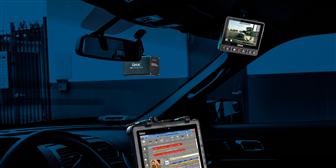
Smart mobile video systems for police patrol cars, a state-of-the-art technology
Drawing on the European Union's experience, for example, the European Commission launched the Future Internet Public-Private Partnership Program (FI-PPP) as part of the European Safe City project in 2011, which engages both the public and private sectors to build a pan-Europe Internet technology platform and infrastructure. The program has already proceeded into its third phase (September 2014 to September 2016) wherein the industry ecosystem is under construction to support large-scale deployment and is engaging participation of private businesses. According to an announcement made in 2016, 400 million euros have been devoted to the program which selected six European cities for pilot implementation of the innovative developments and applications much needed by various aspects of the communities.
Major applications include video analysis and application, real-time positioning, path tracking, information security, ad-hoc networking construction for emergency response, decision support system and smartphone integration. Massive investments in the technologies to access and analyze video images and to integrate communication and information security have drawn attention to preventive policing and helped in the development of early prediction and prevention measures.
The function of video integration, on which American and European governments have placed a strong emphasis, are also focusing on expanding the capabilities for searching video database, dispatching services, tracking vehicles and building a high efficiency police information service network. Investigations on high-tech and Internet crimes in Taiwan are still being conducted mainly by the Criminal Investigation Bureau and local police officers in charge of Internet crimes at the municipal level. Investigations on high-tech and Internet crimes by first-line police officers remain at an early development stage.
VERETOS sets an example for smart mobile video systems for police patrol cars
In the US, police have made major investments in police equipment, particularly in the deployment of cloud platforms for first-line law enforcement, which makes efficient use of large amounts of video data. Getac's VERETOS smart mobile video system is an in-vehicle surveillance system for patrol cars that was developed in response to the changes in US policing strategies to take homeland security, terrorism prevention, social governance and public order into consideration and to leverage the operations of intelligence centers gathering large amounts of information resources. Part of Police Departments in South Carolina and Minnesota have entered into contracts to deploy VERETOS, which has the potential to become available at nearly 20,000 police stations and in more than 200,000 police cars across America. With this track record, Getac believes VERETOS will also benefit first-line Taiwan police forces.
Video images captured by VERETOS during police duty are saved on the cloud for proper evidence management and are further processed using big data analytics so that the massive video footages can be transformed into useful intelligence. VERETOS, equipped on police cars, combines hardware and software solutions including the main system, control panel and multiple in-vehicle high definition video cameras.
VERETOS has a camera design that takes the limited space inside a police car into consideration. The camera on the rear view mirror at the front seat can captures the front view and the camera aimed at the back can keep track of the suspect's activities in the back seat. There is also a camera mounted on top of the vehicle equipped with automatic license plate identification to help police officers detect suspicious vehicles during patrol duty. The dedicated SaaS cloud platform enables direct access to terabytes of video data recording crime scenes in digital formats and gathers and analyzes all types of crime data, thereby establishing evidence for cracking cases. This greatly assists in scientific investigation and enhances active forensic data collection.
In addition, VERETOS also provides a wearable camera mounted on a police officer's chest to expand the scope of evidence collection so that the officer can continue to capture video when he or she has to get out of the car to conduct an investigation. This not only serves the purpose of documenting the investigation and ensuring the police officer's safety but also protects the suspect. VERETOS offers a complete smart policing solution that closely supports first-line law enforcement officers with the body-worn cameras.
As large amounts of photographs and video footages get uploaded to the cloud data center at incredible speeds, this is when the advantages of VERETOS can be fully exploited to achieve benefits on efficiencies and costs in data processing and management. By leveraging the establishment of a cloud data center and information security technologies, VERETOS enables a high level of security and ease-to-use system for regional police stations.
VERETOS uses a highly secure browser as its main control interface for searching, marking and sharing digital evidence and for providing real-time streaming video, drawings of crime scenes and markings of police car locations. Emphasis is also placed on the availability of automatic cloud remote backup systems to guarantee safety of important video data. Most of all, the collected video data is combined with coordinates and historical information including the people, time, location and objects involved in the incident, which upon analysis become critical data helping the police solve crimes. VERETOS effectively raises patrol efficiency, enhances precinct security and analyzes criminal behavior. This is the main reason why the U.S. police have introduced the system as they need a more powerful and active system to help them work more efficiently.
James Hwang, Chairman of Getac, commented that VERETOS not only sets an important example for rugged computers but also establishes a benchmark for police IT systems. It is also a new business model marking a critical turning point in Getac's transformation. Adoption of VERETOS systems is growing in the US with future expansion to Europe in the plan. VERETOS uses Microsoft's Azure cloud computing service platform and mainstream Intel processors. By collaborating with leading technological players in cloud computing, Getac holds bigger advantages in its expansion into the cloud solution market. Getac looks forward to joining forces with more cloud service ecosystem partners to create additional value and capture more opportunities worldwide.
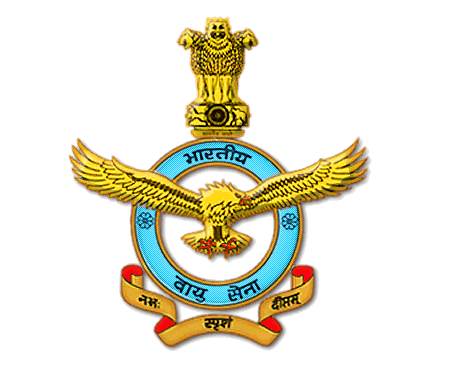
IAF to buy 4 aerostat radars from Indian vendors to boost ground surveillance
The acquisition for the specialized radars has been in the pipeline for sometime but it had failed to materialize earlier, sources said. A fresh Request for Information (RFI), which is the beginning of the acquisition process, has now been prepared for four aerostat radars.
The purchase will be under the new defence procurement rules, which lay stress on buying from Indian companies.
ISRAELI AEROSTAT RADARS NOT SUITABLE: -
The IAF has been using Israeli aerostat radars but there had been serious issues regarding their maintenance and operations. The two radars had cost over Rs 300 crore.
The fresh RFI says that responses were requested only from Indian manufacturers or authorised vendors.
After ascertaining the availability of aerostat system in the Indian market, the actual bids would be invited sometime next year, officials. However, before that happens, the air force wants to reassure itself on issues like level of indigenization, delivery capability and maintenance support.
There had been a move to procure eight aerostat radars which are used for low level airborne ground surveillance.
As per the specifications sought by the IAF, it should have an operating altitude of 15,000 feet.
The Comptroller and Auditor General (CAG) in its 2011 report had highlighted that the Israeli aerostats had developed technical difficulties resulting in an internal probe to fix responsibilities.
HOW AEROSTAT RADARS BOOST AIR DEFENCE CAPABILITY: -
The aerostat balloons are mobile, static or even portable.
Very few countries in the world use these radar carrying balloons which are meant to monitor low level aerial threats.
They are deployed close to the borders to keep an eye on the aerial activities. The lifespan of aerostats are generally 10 years. The IAF had indicated the requirement of at least eight aerostat systems.

24x7 centre to monitor traffic in Gurgaon,Faridabad
Haryana chief minister Manohar Lal said his government would implement a traffic management plan prepared by experts. This would include setting up a traffic management centre, establishing traffic engineering wings and increasing manpower in traffic police departments. He was addressing officials from the two districts at a workshop on 'Capacity Building for Traffic Management in Gurgaon and Faridabad' at the College of Traffic Management.
Responding to the shortage of manpower in traffic police wings in the two cities, Monohar Lal said his government would get part-time employees and also deploy home guards. He added the process of recruiting 7,000 constables had started while the vacancy was about 15,000.
Traffic safety expert Rohit Baluja, who has been tasked to prepare the plan, said the government should treat Gurgaon and Faridabad as one zone while finding solutions to growing congestion.
Pointing out that there would be more public outrage if immediate measures were not taken to address traffic congestion, the chief minister said his government would implement the plans quickly. Though he was non-committal about the timeline, he said, "Some measures may take one year while others may take two years. But we will address it systematically. The last government issued 1,100 licences for land development in a haphazard manner without considering the impact this will have on traffic and infrastructure. You all know there may have been private interest behind such haste in issuing licences. We have issued only 25 licences in the past two years."
On the repeated submerging of Hero Honda Chowk on NH-8 and other parts of Gurgaon, Manohar Lal said water flow stopped as natural drains were blocked. "We are talking to people in Khandsa village so that we get enough land to expand the drain. If that does not work out, we have other options," the CM said.

All stations on Konkan rail route to have video surveillance
Besides, the Madgaon and Thivim railway stations in Karwar region already have the CCTV systems. Prabhu inaugurated the IP-based video surveillance system for 17 stations along the Konkan route during a function held at Margao railway station on Sunday. He also laid the foundation stone for a rail overbridge at Davorlim in South Goa.
The 17 stations on the Konkan route where there would be video surveillance include Kolad, Mangaon, Khed, Chiplun, Ratnagiri, Kankawali, Kudal, Sindhudurg and Sawantwadi in Ratnagiri region, and Pernem, Karmali, Canacona, Karwar, Gokama, Bhatkal, Udupi and Surathkal in Karwar region.
A KRCL official said around 12 to 16 fixed dome type and fixed box type cameras, having recording facility for 30 days are provided at each station to cover the entrance, lobby, platforms, ticket booking counters and other places. Besides, an LED monitor is provided in the station master’s room for monitoring of cleanliness, the official said.
The LED monitors are also provided at nine RPF outposts for security monitoring of these stations. He said the Goa government and Konkan Railway have agreed to construct five rail overbridges at various level crossings around Madgaon City in South Goa district on 50-50 cost sharing basis.

Ottawa police introduce automatic licence plate scanners, as privacy concerns raised
Police on Thursday unveiled the first Ottawa Police Service cruiser to implement the Automatic Licence Plate Recognition technology – a device with three all-weather infrared cameras mounted to the roof, with the ability to scan and record licence plates in multiple lanes of traffic and in multiple directions. The readings are fed into a database, and the officer is alerted to potential offenders within seconds if the plate number matches the police “hot list.”
The technology was first developed by British law enforcement to combat the Irish Republican Army, and has since been implemented by numerous law enforcement agencies in Canada and the U.S., where it has drawn the ire of privacy advocates, including the American Civil Liberties Union, over how data for non-offending vehicles is collected and stored.
In accordance with the Ontario Privacy Commission’s stringent guidelines, Ottawa police have agreed to track data only for offenders – one of the ACLU’s primary recommendations. That information will be stored for five years, while licence plates of “non-hit” vehicles are immediately purged from the data bank.
“It’s not doing a job that we’re not doing already,” said Sgt. Robert Cairns of the OPS escort and traffic support services, and a longtime advocate of the technology who worked extensively with the device in his previous policing career in the U.K.
“Officers are routinely driving and (manually) inputting number plates on a daily basis, but this is running plates exactly the same way.”
Sgt. Cairns said the first 90-minute field test of the device on Thursday morning netted two infractions for suspended drivers, including one who was driving while uninsured.
Police said it was “very important” that implementation of the technology was done in accordance with strict regulations imposed by the Ontario Privacy Commission. Sgt. Cairns said the force is “totally compliant” with those regulations, and has signed a memorandum of understanding with Ontario’s Ministry of Transportation and with the OPP, which has already installed the technology on about 50 vehicles.
“Their results are outstanding, and that was a reason I felt compelled that we should get this equipment,” said Sgt. Cairns.
The technology will help police to quickly identify stolen licence plates, disqualified or suspended drivers, unlicensed drivers, expired validation and people wanted on a warrant. It could also alert officers to vehicles involved in serious crimes, high-risk offenders and Amber Alerts.
Laura Berger, a lawyer with the Canadian Civil Liberties Association, commended Ottawa police for being forthcoming with their intentions, but noted that wasn’t always the case.
In 2013, the force twice denied it was testing the ALPR technology, before admitting to a trial run of one device on an unmarked cruiser. Months earlier, British Columbia’s privacy commissioner had criticized the Victoria Police Department after an investigation found the force had relayed information from both “hit” and “non-hit” vehicles to the RCMP.
“Collecting personal information for traffic enforcement and identifying stolen vehicles does not extend to retaining data on the law-abiding activities of citizens just in case it may be useful in the future,” wrote Commissioner Elizabeth Denham in her 2013 report.
The CCLA shares that concern, and recommends several safeguards, including public reporting on the use of the technology and regular auditing to ensure Ottawa police are “scrupulously” compliant.
Berger said the CCLA wants to ensure the technology is used as intended – “For driving-related infractions as opposed to becoming a tool for whole-scale mass surveillance,” she said.
“Otherwise, what you potentially have is licence plate and location information for innocent people being hoovered up and stored for long periods of time. And that database then has the potential to allow police to track the whereabouts of people whose activities have given police no grounds to suspect of any wrongdoing.
“The potential for privacy invasion is tremendous.”
Sgt. Cairns said safeguards are already in place through “very stringent regulations,” while acknowledging concerns over privacy.
“We have to be very careful with our data,” he said.

Thousand CCTV cameras installed in Bengaluru to keep tabs on you
Bengaluru already has 152 cameras installed by the police's law-and-order wing in the city's central areas and 175 traffic cameras. In the pipeline are another 600 law-and-order cameras and 200 traffic cameras. Also, under the municipal corporation's Hawk Eye project, 198 cameras will be installed at key points in each ward.
Bengaluru, a city of more than 11 million people, is witnessing increasing incidents of crime and traffic violations and has been a target of terror attacks, several of which remain unresolved. Law and order cases in the city increased to 53,089 in 2015 from 47,590 in the previous year, according to data available on the City Police website.
Given the circumstances, the cameras have become essential to policing, said MG Nagendra Kumar, Deputy Commissioner of Police in charge of the Command Control centre that was established last year to monitor surveillance feeds for the law-and-order wing. Realtime videos and images from the traffic cameras go to the police's Traffic Management Center.
"The surveillance cameras will be a precious tool during crime investigation," said Kumar. "Adding more eyes on the street will help to maintain law and order effectively ." R Hithendra, Additional Commissioner of Police (Traffic), said the 198 cameras that the BBMP planned to install following increasing incidents of chain-snatching in the city will be handed over to Bengaluru Police.
Another senior police officer, who didn't want to be identified, said that for every corner in the city to be covered, the police will need a minimum of 2,500 surveil lance cameras. That would be in addition to cameras mounted on 222 Hoysala pa" trol vehicles and 50 body cameras that e will be worn by beat police. Private estabr lishments such as restaurants and l schools, too, are required to install CCTV cameras.
Lucknow, the capital of Uttar Pradesh s and much larger than Bengaluru, plans e to install 9,000 cameras. Pune has put up 1,250 CCTVs across its extended territory t and Surat's comprehensive closed-ciry cuit television, or CCTV , system has more e than 600 cameras.
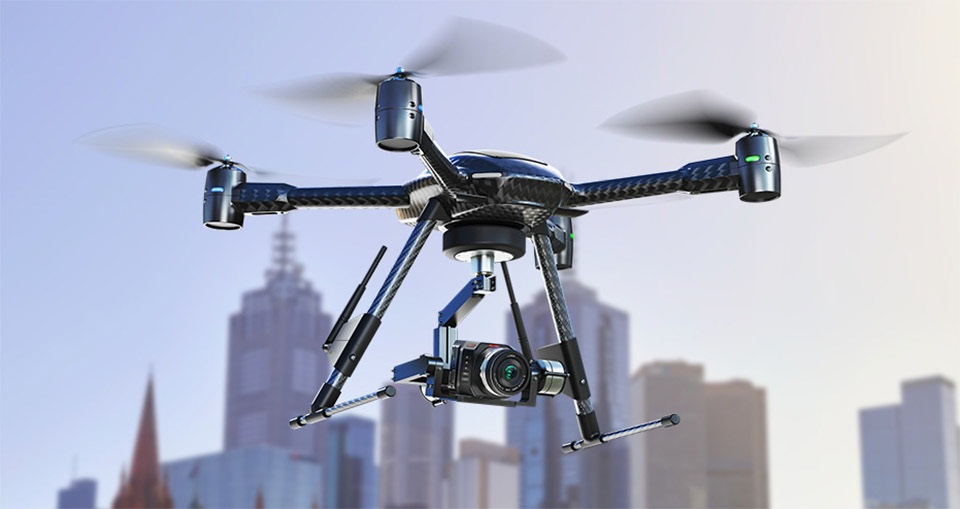
POLICE TO USE DRONES, CCTV CAMERAS DURING GANPATI FESTIVAL
Deven Bharti, joint commissioner of police, law and order said the drone system that was implemented last year will be used this year as well. The number of drones used will, however, be increased. Recently-installed CCTV surveillance with around 6,000 cameras will also be used for this purpose. Bharti added that several Ganesh mandals that had their own CCTV cameras installed will be streaming their footage to local police stations for traffic and security surveillance.
"Apart from that, we are also going to use the general public as the eyes and ears of the Mumbai Police force. Several volunteers from a number of organisations have come forward to help us and will be used as an 'extended force'," Bharti said.
Almost 14,000 people will be a part of the extended force, comprised of 1,500 civil defence officials, 6,000 from the Aniruddha's Academy of Disaster Management, 250 homeguards, 390 wardens, 100 RSP teachers, 400 NCC cadets, 900 NSS students, 300 scouts and guides, close to 3,500 traffic police officers and 100 armed police officers.
"We have cancelled all leaves that the police officers applied for during the ten days of the festival to ensure that the entire force is deployed for law, order and traffic maintenance," Bharti added.
Meanwhile, traffic police joint commissioner, Milind Bharambe, also added that 49 roads have been closed for vehicular movement, 55 have been assigned only one-way vehicular movement, the movement of heavy vehicles has been banned on 18 roads and parking restrictions have been imposed on 99 roads.
Some of the important roads among the 49 closed for traffic are CP Tank Road, VP Road, Tilak Bridge in Dadar, LBS Marg in Kurla West, LBS Marg in Mulund, Santacruz Link Road, Juhu Tara Road and SV Road in Kandivali West.
The traffic monitoring and restrictions imposed by the Mumbai traffic police will be in effect only during the 10 days of the Ganpati festival.
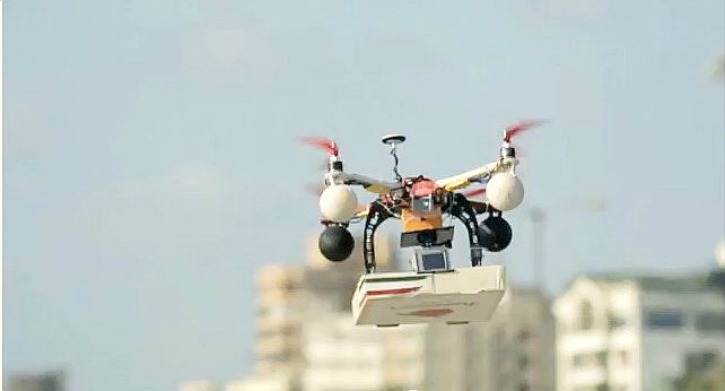
Maharashtra Govt Uses Drones To Monitor Traffic On Mumbai-Pune Expressway, 15 Fined On Day 1
Amol Tambe, Superintendent of Police (Highways), Pune Region, said: “We conducted the demonstration for the first time and used two drones in the Ghat section between the Lonavla exit and Khalapur toll plaza in order to monitor traffic on both sides.”
Aerial pictures of lane-cutting by 15 drivers was captured by the drones. Tambe said, “They were given challan either at the Urse toll plaza or Khalapur toll plaza.” The expressway was monitored between noon and 4pm.
Shiv Sena Minister said “indiscipline and rash driving” led to an increase in road accidents, and added, “We do not have control over rash driving as the length of the expressway is long and there is insufficient police staff for surveillance.”
In June 2016, 17 people died and 43 were injured when a luxury bus rammed into two vehicles and then fell down 20 feet from the Mumbai-Pune Expressway. He also said the idea of drones was introduced because CCTV cameras have their own limitations.
The use of drones in India is slightly dubious. Civilians aren’t allowed to use them but the import of drones isn’t banned. Also the government is allowed to use them for security and surveillance purposes.
Newsletter
Sign Up for Monthly Newsletter
Recent Tweets
CONTACT US
Crux Center for Security
Research and Events (CCSRE)
3rd Floor, Tower-B, Unitech Cyber Park
Sector 39, Gurugram,122022
0124- 4207903, 05, 06
Copyright © 2016 Crux Center For Security Research And Events (CCSRE) | All Right Reserved
